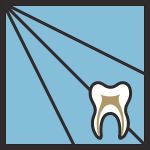Signs of Gum Disease and How to Treat It: Essential Tips for Healthy Gums
- 1. Understanding Gum Disease: What It Is and Why It Matters
- 2. Signs of Gum Disease to Look Out For
- 3. How to Treat Gum Disease Effectively
- 4. How to Prevent Gum Disease and Protect Your Oral Health
- 5. My Personal Experience with Gum Disease Treatment
- 6. When to Seek Professional Help for Gum Disease
1. Understanding Gum Disease: What It Is and Why It Matters
Gum disease, also known as periodontal disease, is a common yet often overlooked issue that affects many people, including myself. I first learned about the severity of gum disease when I started noticing some subtle changes in my oral health. Gum disease is an infection of the tissues surrounding the teeth, usually caused by the buildup of plaque and tartar, which can lead to tooth loss if left untreated.
The progression of gum disease can start slowly, so it's easy to ignore until it becomes more severe. It’s important to understand that gum disease doesn’t just affect your gums; it can impact your overall health. Research has shown that untreated gum disease can increase the risk of heart disease, diabetes, and other systemic issues. Therefore, it’s essential to recognize the early signs and take appropriate action to prevent further damage.
2. Signs of Gum Disease to Look Out For
As I experienced myself, gum disease often starts off without noticeable symptoms, making it easy to overlook. However, there are some common signs that can help you recognize it early. Being aware of these signs can help you take prompt action to treat gum disease before it worsens:
2.1. Bleeding Gums
One of the earliest and most noticeable signs of gum disease is bleeding gums, especially when brushing or flossing. I remember that, at first, I thought my gums were just irritated from brushing too hard. However, when the bleeding continued, it became clear that something more serious was going on. If you notice this symptom, it’s important to act quickly and schedule a dental check-up.
2.2. Swollen or Red Gums
Healthy gums should be firm and pink. If you notice that your gums appear red or swollen, it could indicate an infection or early stage of gum disease. I saw this happen in my own mouth, and the redness around my gum line became a warning sign that I could no longer ignore.
2.3. Persistent Bad Breath
Another common symptom of gum disease is persistent bad breath, or halitosis. It’s often caused by the bacteria present in the mouth when the gums are infected. This symptom may seem harmless, but it’s a red flag. After struggling with bad breath for weeks, I learned that the issue wasn’t just hygiene—it was an infection in my gums that needed attention.
2.4. Receding Gums
If your gums appear to be pulling back from your teeth, exposing more of your tooth or its root, this could be a sign of gum recession. Gum recession was something I didn’t notice right away, but when I looked closely at my teeth, I realized that my gum line had receded in certain spots. It was a sign of gum disease that required immediate action.
2.5. Loose Teeth or Painful Chewing
In more advanced stages of gum disease, the gums and bones that support the teeth can become weakened, causing teeth to feel loose or causing pain while chewing. If you experience this symptom, it’s critical to seek dental care as soon as possible to avoid further damage.
3. How to Treat Gum Disease Effectively
Treating gum disease early is essential to prevent it from progressing and causing more serious issues like tooth loss. When I first started experiencing the signs of gum disease, I didn’t wait long to seek treatment. Depending on the severity of the condition, treatment may involve both professional care and at-home solutions. Here’s a breakdown of how to treat gum disease:
3.1. Professional Cleaning and Scaling
One of the most effective ways to treat gum disease is through a professional cleaning, also known as scaling and root planing. This procedure removes plaque and tartar buildup from below the gum line and smooths the root surfaces of the teeth. My dentist performed scaling and root planing to help reduce the bacteria causing the infection. It made a noticeable difference in my gum health.
3.2. Antibacterial Treatment
In some cases, my dentist prescribed antibiotics to help control the infection and reduce bacteria in the mouth. This can come in the form of oral antibiotics or a topical gel that is applied directly to the gums. For me, this helped reduce inflammation and prevent the infection from spreading further.
3.3. Proper Oral Hygiene Routine
At home, I made sure to follow a diligent oral hygiene routine, including brushing with a soft-bristled toothbrush, flossing regularly, and using an antibacterial mouthwash. My dentist emphasized that maintaining good oral hygiene is critical in preventing and treating gum disease. It may take some time, but with consistent care, gum disease can be reversed in its early stages.
4. How to Prevent Gum Disease and Protect Your Oral Health
Prevention is always better than cure, and I’ve learned that taking proactive steps to care for your gums can help avoid gum disease altogether. Here are some tips that I follow to keep my gums healthy:
4.1. Brush and Floss Regularly
Brushing twice a day and flossing once a day is a non-negotiable part of my oral hygiene routine. Brushing removes plaque, and flossing ensures that the areas between my teeth are clean and free of debris. I make sure to brush gently to avoid irritating my gums.
4.2. Eat a Healthy Diet
A balanced diet rich in vitamins and minerals helps support gum health. I’ve learned that foods high in vitamin C, like citrus fruits, help keep the gums strong and prevent infection. I also drink plenty of water to rinse away food particles and bacteria throughout the day.
4.3. Visit Your Dentist Regularly
Regular dental check-ups and professional cleanings are essential for preventing gum disease. I make it a point to visit my dentist at least twice a year. These visits not only help catch gum disease early but also ensure that my teeth and gums stay in top condition.
5. My Personal Experience with Gum Disease Treatment
As I mentioned, I experienced the early stages of gum disease, and addressing it quickly was key to my recovery. I remember feeling anxious when I saw my gums bleeding, but once I started treatment, I noticed improvement within a few weeks. The scaling and root planing procedure was uncomfortable, but it helped tremendously in reversing the damage. Today, I make sure to stay on top of my oral health to avoid any future issues.
6. When to Seek Professional Help for Gum Disease
If you notice any of the signs of gum disease mentioned earlier, it’s crucial to seek professional help immediately. The sooner you address the issue, the easier it will be to treat. I encourage anyone who is experiencing symptoms like bleeding gums, bad breath, or receding gums to schedule a visit to the dentist as soon as possible. Professional treatment is often required to manage gum disease effectively and prevent further complications.
By taking proactive steps to care for your gums and seeking professional treatment when needed, you can protect your oral health for years to come. If you’re looking for more tips on gum care or need expert advice on treating gum disease, visit Dentistry Toothtruth for more information and personalized care!







 Shawn O'Berry DDS5.0 (26 review)
Shawn O'Berry DDS5.0 (26 review) ForwardDental Madison East4.0 (165 review)
ForwardDental Madison East4.0 (165 review) Alameda Crossing Dental Group and Orthodontics4.0 (188 review)
Alameda Crossing Dental Group and Orthodontics4.0 (188 review) Westborough Family Dental5.0 (71 review)
Westborough Family Dental5.0 (71 review) Center One Dental Associates - Philadelphia Dentist4.0 (281 review)
Center One Dental Associates - Philadelphia Dentist4.0 (281 review) Central Pennsylvania Endodontics, LLC5.0 (241 review)
Central Pennsylvania Endodontics, LLC5.0 (241 review) The Importance of Oral Health Education During Pregnancy for a Healthy Pregnancy
The Importance of Oral Health Education During Pregnancy for a Healthy Pregnancy Best Tips for Brushing Your Teeth Properly for Healthy Gums: Essential Techniques for Oral Health
Best Tips for Brushing Your Teeth Properly for Healthy Gums: Essential Techniques for Oral Health Why Skipping Dental Checkups Can Lead to Bigger Oral Health Problems
Why Skipping Dental Checkups Can Lead to Bigger Oral Health Problems Advantages of Porcelain Dental Restorations
Advantages of Porcelain Dental Restorations How Can Diabetes Cause Tooth and Gum Problems? Preventing and Managing Oral Health Issues
How Can Diabetes Cause Tooth and Gum Problems? Preventing and Managing Oral Health Issues Healthy Habits for Promoting Good Oral Health and Hygiene: Tips for a Healthy Smile
Healthy Habits for Promoting Good Oral Health and Hygiene: Tips for a Healthy Smile